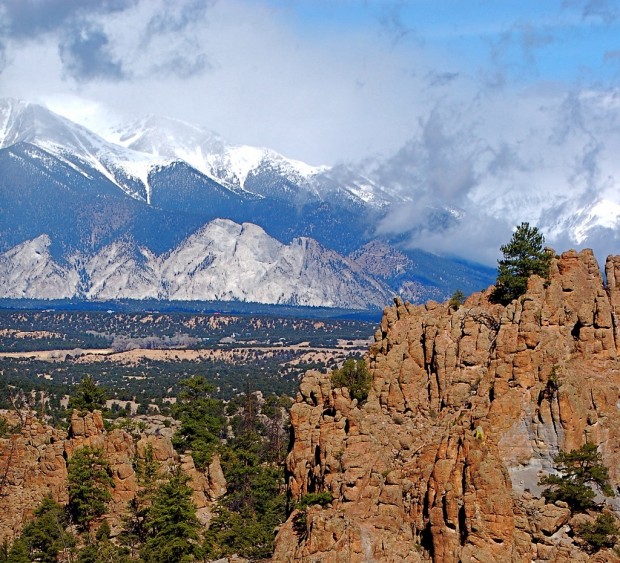We have much more to do and your continued support is needed now more than ever.
Coloradans Want Browns Canyon to be the Next National Monument

Dvorak is the National Wildlife Federation’s public lands organizer in Colorado He’s also one of the best-known outfitters in the state and has been leading fishing and rafting trips down the Arkansas River since the early 1980s.
Some of the best rafting runs through Browns Canyon, prized for its rugged, undeveloped terrain that is at the same time easily accessible to Colorado’s populous Front Range. It’s among the country’s top whitewater destinations. Activities on the river generated an estimated $55.7 million in economic benefits last year, according to the Colorado River Outfitters’ Association.
The area about 150 miles southwest of Denver is also renowned for abundant wildlife, a Gold Medal fishery and backcountry hiking and camping. For at least two decades, area business owners, residents, hunters, anglers, wildlife watchers and other conservationists have campaigned to protect Browns by making it a national monument and designating some of the area as federally protected wilderness.
Proponents of maintaining the wildlife and recreation mecca are rallying around a proposal by Colorado Sen. Mark Udall that would establish the 22,000-acre Browns Canyon National Monument. The bill, S. 1794, co-sponsored by Sen. Michael Bennet of Colorado, will get a hearing Wednesday by the Parks Subcommittee of the Senate Energy and Natural Resources Committee.
“We’ve been working for more than 20 years to protect Browns Canyon. We’ve had public meetings that drew hundreds of people, nearly all of them supporters of making sure Browns stays the way it is now,” Dvorak said. “This has been a grassroots effort. The bill that would make it a national monument is the response to what the public has been seeking for a long time.”
The recently designated Organ Mountains-Desert Peaks and Rio Grande del Norte national monuments, both in New Mexico, had widespread public support. President Barack Obama used the Antiquities Act to establish the monuments after legislative attempts failed.

Browns, with its granite rock formations and sweeping views of the Arkansas Valley and the Collegiate Peaks, several of which tower more than 14,000 feet, is home to bighorn sheep, elk, deer, black bears, mountain lions, eagles and falcons.
The canyon is an important part of the economy, drawing tourists and people who have moved to surrounding communities for the quality of life, Dvorak said. He believes making it a national monument likely would boost the economic benefits while conserving it for future generations.
“A monument designation would put a star on the map next to Browns Canyon,” Dvorak said.
Help Protect Public Lands
![]() Call your senators at (202) 224-3121 and ask them to support Sen. Mark Udall’s bill, S. 1794, the Browns Canyon National Monument and Wilderness Act of 2013.
Call your senators at (202) 224-3121 and ask them to support Sen. Mark Udall’s bill, S. 1794, the Browns Canyon National Monument and Wilderness Act of 2013.






















